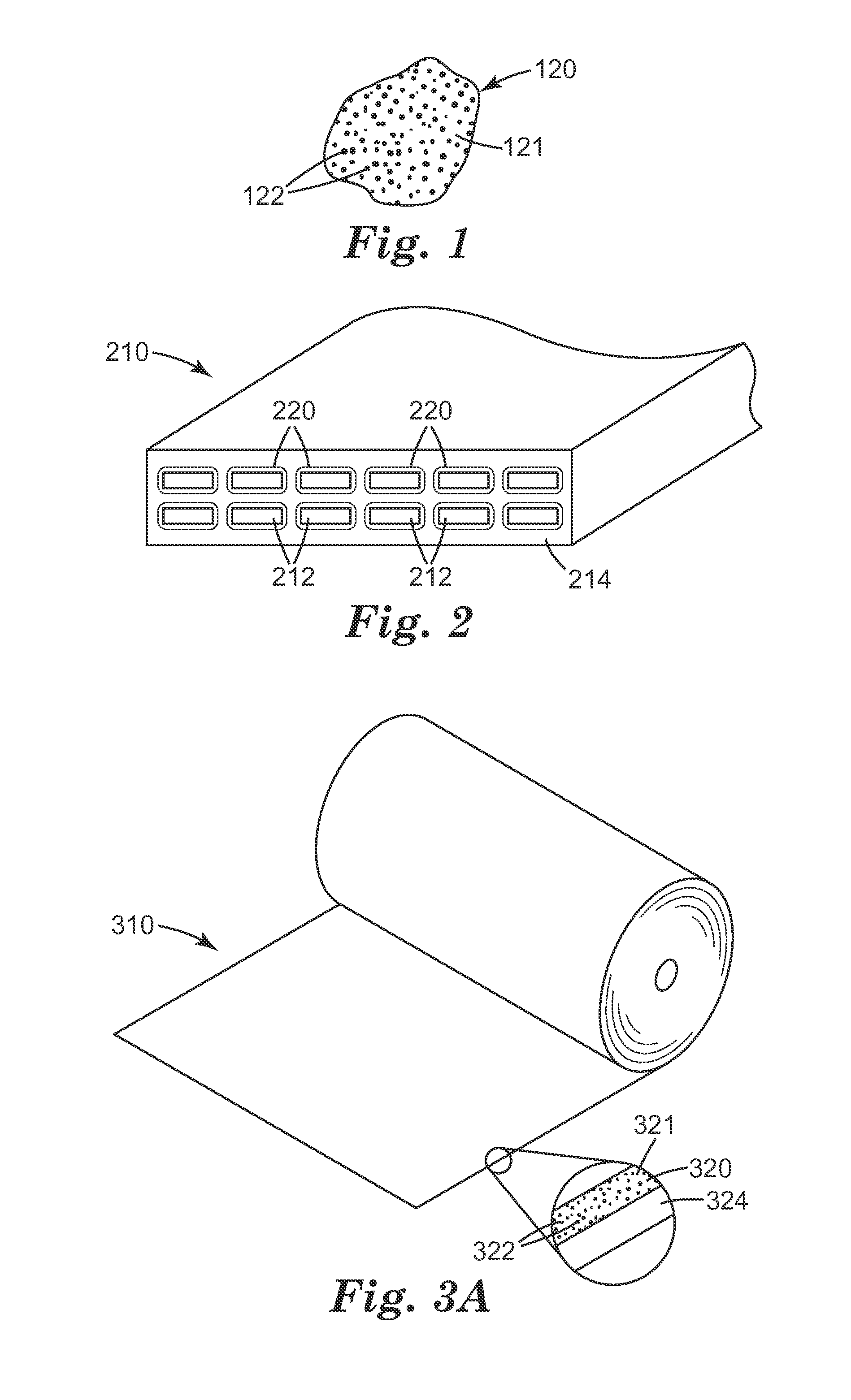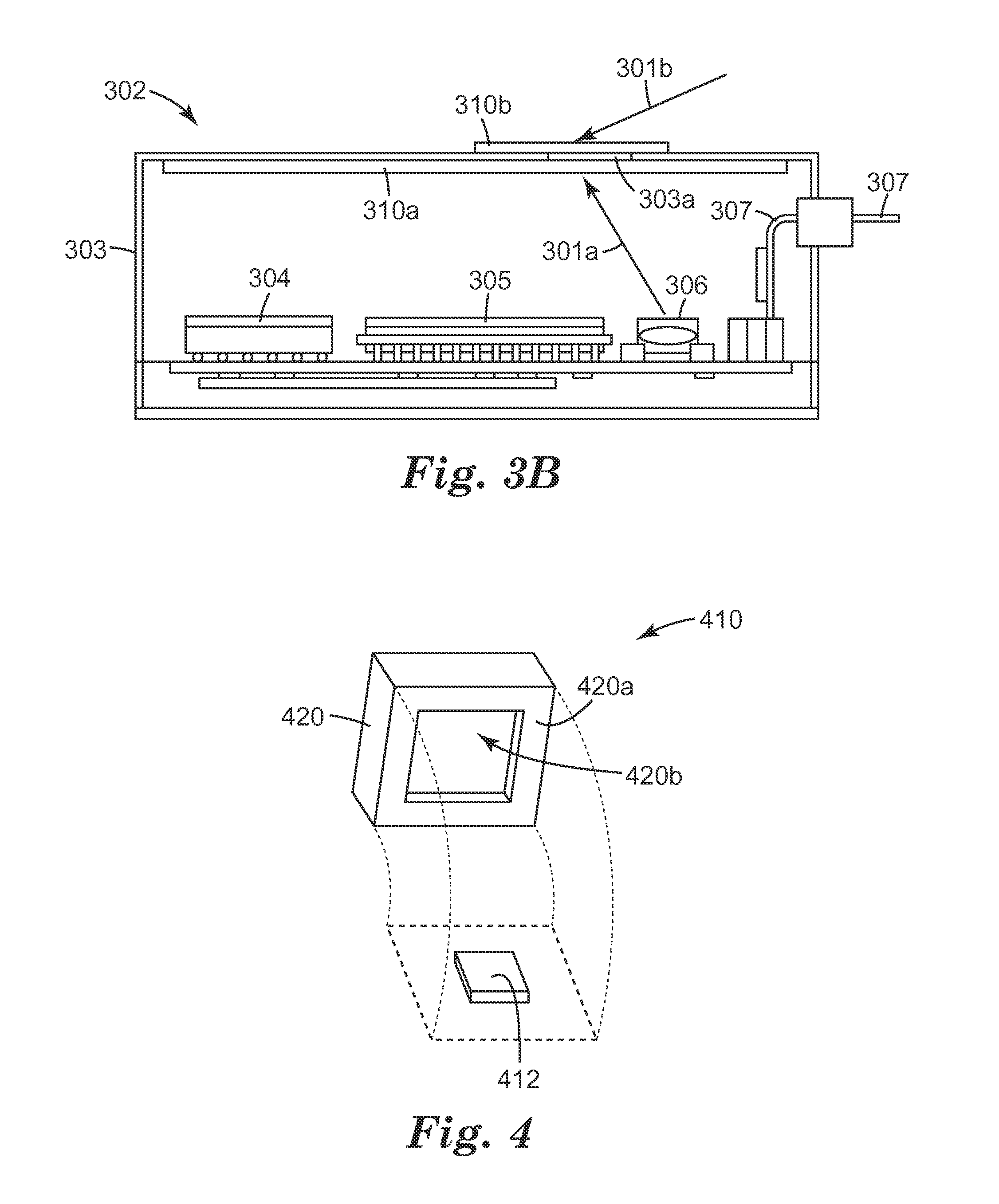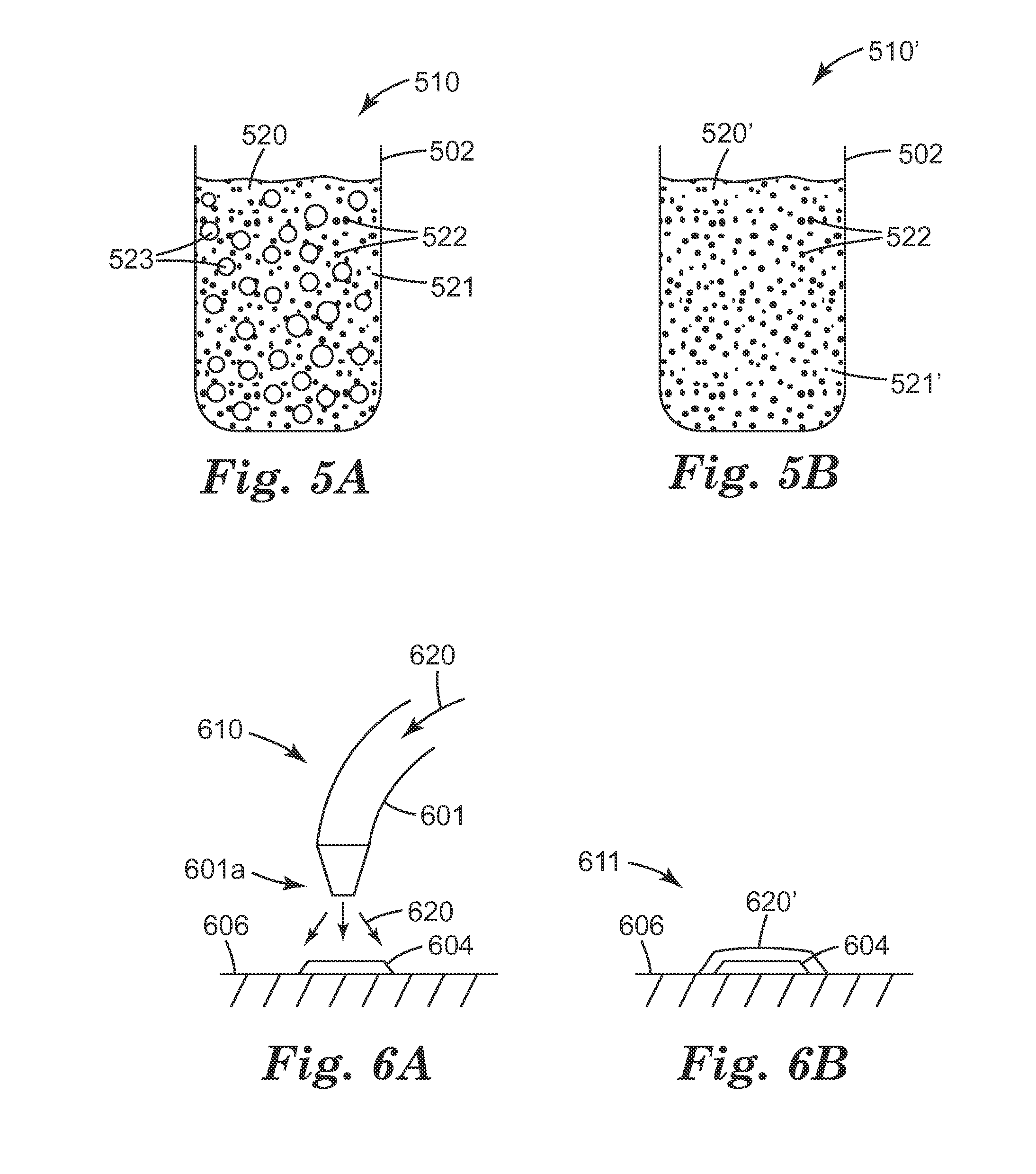Electromagnetic Interference (EMI) Shielding Products Using Titanium Monoxide (TIO) Based Materials
a technology of electromagnetic interference and shielding products, applied in the direction of magnetic/electric field screening, electrical equipment, etc., can solve the problems of providing a surprisingly high dielectric loss, magnetic loss, or both, and achieve the effect of high dielectric loss
- Summary
- Abstract
- Description
- Claims
- Application Information
AI Technical Summary
Benefits of technology
Problems solved by technology
Method used
Image
Examples
example 1
Composites with Wax Matrix Material and Dielectrically Lossy TiO Fillers
[0130]As-received TiO powders were ground manually in a mortar and pestle to eliminate any large agglomerates. A stoichiometric amount of the TiO powder was dry mixed with a wax mixture (a blend of CALWAX 8345 and paraffin at 4:1 wt. ratio, respectively) in a SPEEDMIXER (Model DAC 150.1 FVZ, obtained from FlacTek Inc., Landrum, S.C.). The resulting mixture was placed in an oven pre-set at 150° C. for 10 minutes. Once the wax was molten, the mix was then poured into an aluminum weighing pan. Once the mold was cold and hardened into a solid, a pellet of the resulting composite material was taken out. The amount of TiO in the composite was about 57.8 wt. %, which corresponds to about 20 vol. % loading. The composite pellet was then cut into a toroidal body for dielectric co-axial measurements. The toroidal body had an outer diameter of 2.54 cm, an inner diameter of 1.10 cm, and a thickness (or height or length) of ...
example 2
Composites with PVDF Matrix Material and Dielectrically Lossy TiO Fillers
[0134]Measured quantities of high purity TiO and PVDF polymer powders were melt blended in a glass beaker at T=250° C. for 10 minutes on a hot plate. A drop of Fluorosurfactant FC-4430 was added to the mixture. The resulting mixture was poured onto an aluminum plate (1-2 mm thick and 10 cm×10 cm in size) separated by a spacer and hot-pressed at T=200° C., under a load of 58.84 kN for 15 minutes in a Carver Laboratory press (Model no. 2699, obtained from Carver Inc., Wabash, Ind.).
[0135]The hot-pressed composite was then allowed to cool down to room temperature where it hardened into a solid, and was then cut into a toroidal body having an outer diameter of 2.54 cm, an inner diameter of 1.10 cm, and a thickness (or height or length) of 2 to 3 mm. The amount of TiO in the composite was about 54.09 wt. %, which corresponds to about 30 vol. % loading. Complex dielectric properties were calculated over the GHz frequ...
example 3
Composites with Epoxy Matrix Material and Dielectrically Lossy TiO Fillers
[0140]To high purity TiO powders (7.8 g), 1 wt % hydrophobic nanosilica was added using dry speed mixing technique. The resulting mixture was added to epoxy (2.2 g) in a small plastic jar and put in a speed mixer (DAC 150 FVZ, Siemens, spun at 2000 rpm for 2 minutes) to make composites. The mix was placed in an oven pre-set at 80° C. for 4 hours. Once the epoxy composite was completely cured, the composite mix was taken out of the plastic jar (which was used as a mold). The composite sample was then machined into a toroid (i.e., a doughnut) shaped sample (outer diameter=0.275 inch (0.70 cm) and inner diameter=0.120 inch (0.30 cm), thickness=3-6 mm) samples for electromagnetic co-axial measurements.
[0141]Complex dielectric and magnetic properties were calculated over the frequency range of 0.1 to 18 GHz from S parameters using an Agilent E8363C Network Analyzer coupled to a Damaskos Model MO7T Air Coaxial test ...
PUM
| Property | Measurement | Unit |
|---|---|---|
| vol. % | aaaaa | aaaaa |
| frequencies | aaaaa | aaaaa |
| frequencies | aaaaa | aaaaa |
Abstract
Description
Claims
Application Information
 Login to View More
Login to View More - R&D
- Intellectual Property
- Life Sciences
- Materials
- Tech Scout
- Unparalleled Data Quality
- Higher Quality Content
- 60% Fewer Hallucinations
Browse by: Latest US Patents, China's latest patents, Technical Efficacy Thesaurus, Application Domain, Technology Topic, Popular Technical Reports.
© 2025 PatSnap. All rights reserved.Legal|Privacy policy|Modern Slavery Act Transparency Statement|Sitemap|About US| Contact US: help@patsnap.com



